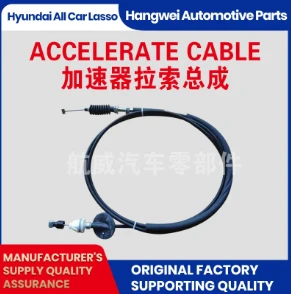hand brake line
Understanding the Hand Brake Line Importance and Maintenance
The hand brake, also known as the emergency brake or parking brake, plays a pivotal role in vehicle safety and functionality. One of its crucial components is the hand brake line. This article delves into the significance of the hand brake line, its workings, and maintenance tips to ensure optimal performance.
The hand brake line is a cable that connects the hand brake lever, typically located between the driver and passenger seats, to the rear brakes of a vehicle. When the driver pulls the hand brake lever, it applies tension to the cable, which in turn engages the rear brakes. This mechanism is essential for preventing the vehicle from rolling when parked, especially on inclines. It also serves as a backup braking system in case of a failure in the primary brake system.
Understanding how the hand brake line functions is critical for any vehicle owner. The line usually consists of a steel cable that runs through a housing. This design allows for smooth operation while minimizing wear and tear. When the hand brake is applied, the tension on the cable pulls the brake pads or shoes against the braking surface, effectively bringing the vehicle to a standstill. Conversely, when the hand brake is released, the cable slackens, and the brakes are disengaged, allowing the vehicle to move freely.
Regular maintenance of the hand brake line is vital for ensuring its reliability. Over time, exposure to the elements can cause rust and corrosion on the cable, leading to reduced efficiency or even failure of the hand brake system. Owners should periodically inspect the hand brake line for any signs of wear, such as fraying or significant rust. If any issues are detected, the cable should be replaced immediately to prevent accidents.
hand brake line

Another important aspect of hand brake line maintenance is ensuring the cable is properly lubricated. A well-lubricated cable allows for smoother operation and reduces the risk of sticking. Using a silicone-based lubricant can be effective in keeping the cable functioning smoothly. However, it's essential to avoid over-lubricating, as excess lubricant can attract dirt and debris, potentially hindering performance.
Additionally, the adjustment of the hand brake line is crucial for its effectiveness. A hand brake that is too loose may not engage properly, while one that is too tight can cause premature wear on the brake system. Vehicle owners should refer to the owner's manual to determine the appropriate tension for their specific make and model.
While many vehicle owners may opt to perform basic inspections and maintenance themselves, it is often advisable to consult a professional mechanic for more complex assessments and repairs. Mechanics have the expertise to diagnose underlying issues that may not be immediately apparent to the average driver.
In summary, the hand brake line is a vital component of a vehicle’s safety system. Understanding its function and importance can help vehicle owners appreciate the necessity of regular maintenance and timely repairs. By being proactive in checking for wear, lubricating the cable, and ensuring proper adjustments, drivers can ensure their hand brake system functions effectively, providing safety and security when parked or in emergencies. With these practices in place, you can enjoy peace of mind knowing that your vehicle is equipped with a reliable hand brake system.
-
Upgrade Your Control with Premium Throttle CablesNewsAug.08,2025
-
Stay in Control with Premium Hand Brake CablesNewsAug.08,2025
-
Experience Unmatched Performance with Our Clutch HosesNewsAug.08,2025
-
Ensure Safety and Reliability with Premium Handbrake CablesNewsAug.08,2025
-
Enhance Your Vehicle with High-Performance Clutch LinesNewsAug.08,2025
-
Elevate Your Ride with Premium Gear CablesNewsAug.08,2025
